Ancient PersiaIran in the contemporary era
The language of ancient Iranians
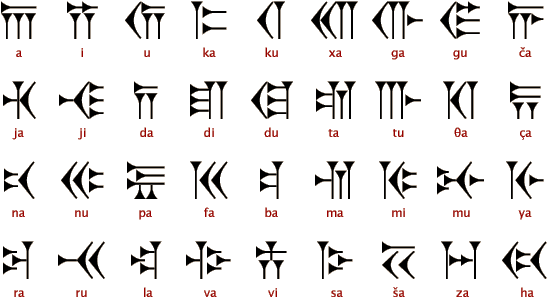
Old Iranian language
From ancient Iranian languages, we are familiar with two ancient Persian and Avestan languages through written documents:
Ancient Persian : This language, which is also called Old Persian and Achaemenid Persian, was the official language of the Aryans during the Achaemenid period, and it is closely related to Sanskrit and Avestan. .
…..
The most important documents that are available from the ancient Persian language are the inscriptions of the Achaemenid emperors, the oldest of which belongs to "Ariarmene", the great-grandfather of Darius the Great. ( About 610 ـ 580 Before Christ ) [ That is, two thousand six hundred and seventeen years before today ] And the most recent of them from Ord Shir Som ( 358 ـ 338 ق. M. ) Is . The most important and greatest work of the ancient Persian language is the Baghstan inscription ( بیستون ) It is that Bamer Dariush on the rock of Biston ( Hamadan Bekermanshah road ) ripped off .
These inscriptions are written in cuneiform and their total number is approx 500 The words of the ancient Persian language are extracted .
…..
…
To download the book of the ancient languages of Iran, go to the next article
The language was from one of the eastern regions of Iran, but it is not known exactly which region, and it is not clear when this language became popular.. The only work of this language is Avesta, the Zoroastrian Bible. Zarathustra's own hymns, the Gathas, which are the oldest part of his poem, indicate an older dialect of this language.. The shortest time that can be placed for the creation of Zoroaster is the 6th century BC. Therefore, the language of the Gathas is not newer than this time, but it can be much older.
…
The Avesta was written in a script known as the Avesta script, apparently at the end of the Sassanid period around the 6th century AD. . For this purpose, it was invented based on the Pahlavi line, and unlike the Pahlavi line, it is a clear, simple line that fulfills the purpose..
…
Avesta, the religious-historical book of Zoroastrians, was not written at the same time, but as can be seen from the language and content of its different parts, it was composed in different periods. . The book of Avesta has been compiled and prepared by different teachers over time and it is the main religious reference of Zoroastrian Gathas. .
…
An independent work has not yet been found on other ancient languages, but we know about the existence of some of them through the words left in other languages, or the mention made by historians, or through the middle form of these languages..
…
One of these is the ancient Median language of Iran, which was the language of the kings of the Median dynasty and the people of Maghreb and central Iran. In the inscriptions of Assyrian kings, Medes are mentioned. Words from this language have remained in Greek and Latin languages, but the main source of our knowledge of this language is the words and phrases that have remained in the inscriptions of the Achaemenid kings who succeeded the Median kings..
…
Other languages are Sogdian, Khwarazmi, Scythian, and Parthian, whose middle forms have written documents, and they all belong to the eastern regions of the Iranian plateau. . In the inscriptions of Darius the Great, the names of the cities where these languages were common are mentioned: Sogd, Khwarazm, Saka and Parthia . Other cities such as Herat, Rukhaj and Balkh are also mentioned, which had separate languages. In other sources, we come across the names of Balkhi, Rokhji, Heravi, Maruzi, Segzai, and Kermani languages, which have gradually disappeared..
…
The ancient Iranian languages are very close and similar to the ancient languages of India, especially the language used in the Vedas, which is the oldest work of the Aryan languages.. The majority of verbs and prefixes and suffixes are basically the same, but there are also verbs and words that are specific to one of the two categories, such as saying and rain and snow, which are only found in Iranian languages.. To understand the basic similarity of these languages, you can pay attention to the first ten numbers of Sanskrit and Avestan:
In terms of sounds and morphological rules, the ancient languages of India and Iran have nothing in common, but as can be seen from the comparison of the first ten numbers, there are some main differences in the sounds between the two languages, which can be used as a measure of recognition..
…
Middle Iranian language
The intermediate languages are between the ancient languages and the current languages of Iran. It is difficult to say from which date the middle languages begin. If we consider that the evolution of the language is gradual from one form to another, it is also possible to imagine a definite boundary between the ancient, middle and current languages..
The degree of recognition of middle languages is basically one of their differences compared to the older forms, these languages are generally simpler, and the other is their abandonment.. But some common languages may be more conservative in evolution than some abandoned languages . As Pashto and Asi are more conservative than Parthian and Middle Persian .
From the inscriptions of the recent Achaemenid kings, it can be seen that the ancient Persian language has become simple since those days, and the grammatical errors in these inscriptions are an indication that the observance of these rules has fallen out of vogue.. Therefore, the beginning of Middle Persian can be attributed to the end of the Achaemenid period, around the fourth century BC .
…
Our knowledge of Middle Iranian languages was increased by the discoveries that were made in Central Asia and China from the beginning of this century, and several Middle languages that we were not aware of before were found.. Currently, Middle Persian, Middle Pahlavi, Sasanian language, Parthian language, Parthian language, Sogdian language, Khotani Scythian language, and Khwarazmi language are known.. Small fragments were also found in a script derived from the Greek script, which is apparently Heptali and from Iranian languages. Besides, many words from the Pahlavi and Parthian languages, which entered the Armenian language during the Sassanid and Parthian periods, are the main sources for the research of middle languages. Iran is considered.
…
Iranian languages can usually be divided into two main categories according to their phonetic and grammatical similarities: Western category and Eastern category.
Ancient Persian, Madi, Pahlavi Middle Persian, Parthian, and modern Persian belong to the western category. Sogdian, Scythian, Khorezmian, and Ossetian languages belong to the eastern category. The Avestan language is similar to the western languages and in some ways to the eastern languages, so it is not easy to attribute it to one of these two groups.. In terms of native language, it is one of the languages of eastern Iran .
…
This division is also true in today's languages and dialects of Iran, such as Persian, Kurdish, Lori, and Balochi, the dialects of the southern shores of the Caspian, and the central and southern dialects of Iran all belong to the western category, but Pashto is the local language of Afghanistan and Yaghnobi is a remnant of Sogdia. And the Iranian dialects of the Pamir and Asi plateaus, whose people migrated from the east to the Caucasus, belong to the eastern category.. Kafir dialects of Afghanistan are a linguistic sequence that may have been the boundary between Indian and Iranian languages, and therefore have common features with both groups. .
…
In the middle languages, it can be said that the grammar has become simpler and the interpretation of nouns, adjectives and pronouns has been shortened, if not lost, and the detailed device of verbs with multiple aspects, moods and tenses has been simplified and
Using prepositions to determine different states of nouns has become more common in ancient languages and compound verbs have become more popular.
…
In the middle languages of the western category, the development has progressed towards simplicity. In Pahlavi and Parti, nouns are practically not used, Deuteronomy has disappeared, the distinction between masculine, feminine and neutral has practically disappeared in Pahlavi inscriptions, some names end in y, which in Pahlavi books becomes w.
…
In these two languages, the present participle is one of the main verbs of the verb, from which the imperative verb and the obligatory verb are also formed; The past participle and its derivatives, as is usual in Dari Persian and the majority of current dialects of Iran, are made from passive adjectives, and this is one of the important characteristics of these languages.. To express the meaning of what I said, in fact, the phrase I said is used with a possessive pronoun.
…
This way of constructing the past participle is one of the reasons that, as a result, in most of the western dialects of Iran, including Persian, the prepositional pronouns and forms have become important and dominated, and have often driven active pronouns and other pronouns out of the language scene altogether.. In Persian, man is basically a possessive pronoun, which is derived from mena in ancient Persian. The active pronoun in ancient Persian is for the theologian Adam, but there is no trace of it in Persian, but in the eastern dialects of Iran in general, and in some western dialects such as Parti, Khalkhali, and Tati, its traces are present..
…
In the case of necessary verbs, an object adjective with a definite verb, that is, with the present tense of the verb ,ha = to be ‚ is used to make the past tense. In the third person, the passive adjective does the work of the verb alone. In the third person plural, sometimes it is used with a definite verb and sometimes without it.
The languages of the eastern category, i.e. Sogdian, Scythian, Khorezmi, Asi, Pashto, and some of the dialects of the Pamir Plateau, have common words, sound changes, and grammatical rules that distinguish them from the western category..
In terms of grammatical commonalities, we can mention the lack of added fractions or similar in eastern languages . Also, in the construction of verbs, commonalities can be found, such as in Sogdian and Khwarazmi, the past participle can be formed from the present participle, unlike Persian and Parthian, which always takes the past participle from the passive adjective, and these two languages use the word com to form the future verb and to They use the definite article of the verb .
…
party language : The Parthian language is the language of the Parthian people, one of the northeastern tribes of Iran, and it is a common language of the Parthians. There are two types of works in this language: One is the works written in the Parthian script, which is a script adapted from the Aramaic script, and the other is the Manuscript works written in the Manuscript script, which is adapted from the Syriac script..
…
The main part of the first type of inscriptions of early Sassanid kings is written in Parthian and sometimes in Greek in addition to Middle Persian. . The oldest of this type of documents is found in Oraman, Kurdistan, which is known as the cradle of ancient Iran. The Kaljengal inscription near Birjand probably belongs to the Sassanid period. . The most important of these works are the narration of the Party inscription of Shapur I on the wall of Zoroastrian Kaaba, Naqsh Rostam, Narsi inscription in Paikoli, Kurdistan, and Shapur I inscription in Haji Abad, Fars..
…
In these inscriptions, like many Pahlavi inscriptions, Aramaic hezvarash is used, which is generally different from Pahlavi hezvarash..
The clay documents that were found in the recent excavations of Nesa, the old city of Parth, where probably the tombs of the Parthian kings were located, are in Aramaic script, close to the script of the Oraman version.. It is still not certain whether the language of these documents is Parthian or Aramaic. If it is Parthian, as it is likely, these documents, which belong to the first century BC, can be considered the oldest Parthian documents. .
…
Manuscript works are among the works that were found in the recent discoveries of Turfan Central Asia. These works are all written in a script that was typical of Manichaeans and adapted from Syriac, and unlike the Parthian script, it does not have a hezvar, and unlike the script of the inscriptions, which has a historical form, that is, it shows an older pronunciation than the pronunciation of the time of writing, indicating the pronunciation of the time of writing. Is.
These works can be divided into two parts: One of them was written in the 3rd and 4th centuries AD and the Parthian language is authentic, the other works were written from the 6th century onwards and were probably created after the abandonment of the Parthian language in order to comply with the religious tradition. The 4th and 6th were not found .
The manuscripts obtained from Maniwi's works are generally later than the date of composition and belong to the 8th and 9th centuries AD.. In the Maneurian line, the movements are incompletely represented.
…
Apart from the mentioned works, the Parthian words that remained in the Armenian language are very important for the research of this language, especially because of the recorded movements..
If we consider Nessa's works to be Parthian, and also according to the Oraman document and the emergence of the Parthian script in the first century AD instead of the Greek script that was popular since the time of the Seleucids, it can be said that the Parthian language was strong from the beginning of the first century AD or a little before that. It became the official and court language of Iranian emperors.
The decline of the Parthian language can be attributed to the fourth century AD, that is, after the deployment of the Sassanid troops to counter the attacks of the northern tribes..
None of the existing dialects of Iran can be considered a direct continuation of the Parthian language, the present-day dialects of Khorasan are generally Persian dialects, and the main language of these areas has disappeared due to the invasion of various ethnic groups and the influence of the official language of the Sassanid period, but the Parthian language in the period The Parthian government, in turn, had a great impact on the Middle Pahlavi Persian language, and this influence can be seen in the Persian language today. .
…
Middle Persian : From this language, which is the middle form of ancient Persian and modern Persian, and was the official language of Iran during the Sassanid era, various works have survived, which can be divided into several categories.: The inscriptions of the Sasanian period written in a script adapted from Aramaic script, but separate from the Parthian script.. Pahlavi books, most of which are Zoroastrian works, and the handwriting of these works follows the handwriting of Pahlavi inscriptions and its written form.. Phrases left on coins, seals, vessels, etc. Manuscript works written in Manuscript script and all of them are recent discoveries in Central Asia. We should also consider the inscriptions found in the Dora Synagogue, as well as the Pahlavi manuscripts written in broken handwriting on papyrus.. In all these works, except Manichaean works, Aramaic words are used. The script of inscriptions and the script of books, as well as the script of coins, seals, and gems are historical scripts, that is, it indicates the older pronunciation of the language, but the Manuscript script reflects the usual pronunciation of the time..
…
The existing works of Pahlavi language are the most detailed part of pre-Islamic literature, and among them, Zoroastrian works have a special contribution. Almost all Pahlavi works are Zoroastrian works, which were mostly compiled around the 3rd century of Hijri, although the originals of some of them date back to the Sassanid period..
The most important Pahlavi inscription of Shapur I in Zoroastrian Kaaba is Naqsh Rostam. Among other inscriptions, we can mention the Sassanid Kirtir Mobad inscription in the role of Rajab and Zoroastrian Kaaba, and the Narsi inscription in Paikoli around Kurdistan. Among the works of Pahlavi, a book that is specific to Zoroastrian literature is Dinkord and Bandheshen, and Dadestan Dinik and Madigan, Hazardastan, Arda Virafnameh, and Minog Khardwanamah. Hai Manouchehr and Pandnameh Azarbad Maraspandan as well as the Pahlavi commentary of some parts of the Avesta should be mentioned.. Among the works that do not have a religious aspect, Yadgar Zariran, Karnameh Ardeshir Babkan, Asurig Tree, Khosro Kwatan, Vrizak, and Madigan Shatrang are worthy of mention..
The current Persian language is a continuation of the Pahlavi language. However, many Parthian words have found their way into Middle Pahlavi Persian since the time of Parthian domination, and as a result, into current Persian.. Such are the words "angel", "javid", "organ", "farashtan", "kastan" and "murgh". . Also, according to the rules of linguistics, Pur in Pahlavi son, Mehr, Vachahr, Shahpur, Farzaneh and Pahlavan should be considered parti words..
…
Sogdian language : This language was common in the city of Sogd, where Samarkand and Bukhara were its centers. Samarkand and Bohar have been important centers of Iran, which unfortunately were occupied by Russia during the Qajar era, and today they are still occupied by a fake country called Uzbekistan. . At the time, Sogdian was considered the international language of Central Asia and it spread to China. Sogdian works are all recent discoveries of Central Asia and China.
Sogdian works can be counted in four types: Buddhist works, Manichean works, Christian works, non-religious works. Among these, the Buddhist works are more detailed.
…
The Sogdian script is a script adapted from the Aramaic script, in which hezvarish is used, but the number of these hezvarish is few.. All Buddhist works, as well as non-religious works and the Qorbalgson inscription in Mongolia are written in Chinese, Uyghur and Sogdian script, belonging to the 3rd century Hijri.. Christian works are written in Syriac script and Manichaean works are written in Manichean script. There is a slight difference in language between Buddhist, Christian and Manichaean works, which is the result of the accent difference and the time difference of these works.. Christian Sogdian works apparently show a newer pronunciation. The original Sogdian script in which the Buddhist works were written is similar to the Pahlavi script of the historical script and indicates an older pronunciation..
…
The Sogdian language gradually disappeared against the influence of the Persian and Turkish languages. Apparently, this language remained until the 6th century of Hijri. Today, the only surviving part of the Sogdian language is the dialect of the Yaghnoub people, who speak it in one of the valleys of the Zarfshan river, and the remnant is one of the Sogdian dialects..
…
Language circumcision : This language is the language of one of the Scythian tribes of the East, who at one time conquered the southeast of Kashgar and made their language popular in that region. .
The works of Scythian language generally belong to the 7th to 10th century AD and include Buddhist works, medical texts, stories and anecdotes, business letters, official documents and others.. Most of these works are translated from Sanskrit, but some are also translated from Tibetan or original compositions.
In the existing works of this language, one can distinguish an older form and a newer form. The older form of this language is similar to old Iranian languages in terms of grammar : Nouns are used in seven cases and the structure of verbs is detailed, but in the newer Scythian case, the use of nouns is much simpler. The wonderful summation of new Scythian sounds is one of its features.
…
Khwarazmi language : The Khwarazmi language was typical of Khwarazm and apparently it was prevalent until around the 8th century of Hijri, and after that it gave way to Persian and Turkish.. Turkish is a non-Iranian language that has spread in Azerbaijan, Iran, and unfortunately, over time, it has destroyed the old Azeri language of Iran, which has a Pahlavi root. .
The discovery of the works of Khwarazmi language, apart from the words mentioned by Abu Rihan Biruni in the works of al-Baghiya, is completely new. . These works consist of two jurisprudential versions in Arabic in which phrases in Khwarazmi language are quoted, as well as glossaries written to explain Khwarazmi phrases in one of these versions, but the most important work in Khwarazmi language is the introduction to Zamakhshari literature, including Arabic words and It is a translation of Khwarazmi. The works of Khwarazmi are all written in Arabic script, but their reading and interpretation have not yet been completed. It is not yet possible to read the brief works that were written in the ancient language of Khwarazmi in a script adapted from Aramaic script. . The main problem in reading the Khwarazmi expressions of the introduction to literature is that the words generally do not have Arabs and their punctuation is also incomplete..
…
The Khwarazmi language is close to the surrounding languages, namely the Sogdian, Scythian, and Asian languages. In the Khwarazmi language, as can be seen from the aforementioned literature and jurisprudential texts, some Persian and Arabic words have been introduced, which indicates the influence of these two languages in Khwarazmi..
…
Apart from the above-mentioned middle languages, which are the main languages whose traces are available today, another language that is closely related to the Scythian language of Khatn was common around Tamashq in the northeast of Kashgar, and brief traces of it have been found, but it is still completely it is not on.
A form of the Middle Asian language can be recovered in some historical and geographical names, as well as in some words that entered the Hungarian language. .
…
Click on the link below to download the book on the ancient language of Iran


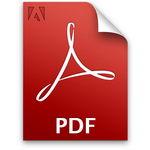
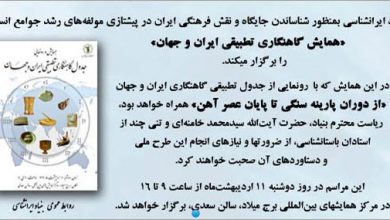
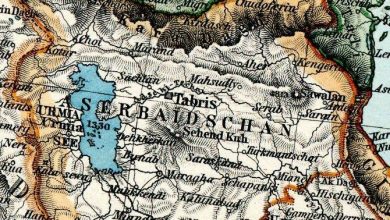
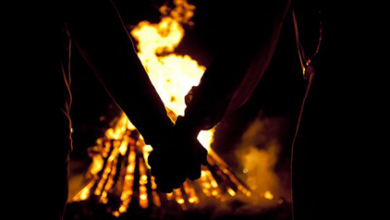
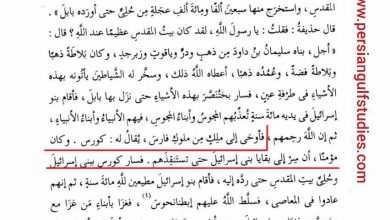
According to the works and inscriptions left behind …
The language and dialect of Cyrus the Great is 80% similar to the language of the Baloch people …
And the main inhabitants of the Iranian plateau before the Aryans entered Iran were the Baluchs …
In fact, if there is a claim of ownership over Iran, Iran belongs to the Baloch people …
Just like America belongs to the red skins, the original natives of America …
Go and study how far Baluchistan's Mehrgar civilization has been and how many thousands of years before Christ …
Goodbye …
The language of Iranians was Elamite and non-Aryan. Parsava or Pars is also located in the west of Iran with the same Kurdistan. In general, the main question is this: 1. Why the so-called Persian language has nothing in terms of vocabulary and grammar with ancient Persian and even
30% of the words found in Elamite inscriptions of 4000 years have Aryan roots..
The Persians first lived on the shores of Lake Urmia, but under the leadership of the great ancestor of the Persians, namely Achaemenid, they settled in Anshan, south and central Iran, and near the civilization of Ilam, and all their big cities from the beginning to the end were built in this land until today.
you said: "Why does the so-called Persian language have no lexical and grammatical similarities with ancient Persian or even"
Well, if you know a little about ancient Persian, then you will see that today's Persian language is very similar to ancient Persian, but the linguistic rules have changed a lot, and all in all, the similarity of today's Persian with ancient Persian 2500 years ago is much more than the similarity of today's English with Old English. It was a thousand years ago, so you tell me why?
Today's religion has a central connection with Darius I. Dariush, a suspicious king accused of murder (Bardia) And genealogy is for yourself words with suffixes (Horse) From his period they have entered the Persian language, but there is no history of him. Ancient Persian was established by his scribes and his father, who was called Gestasb or Vishtasb, and satrap of the northeastern province, was the beginning of the confusions of the history of religion and language in these regions. It is the falling of tongues.
What are you saying?
There is no document from ancient times that accuses Darius of kingship, and such accusations are all related to our times, which I have not yet seen a document to prove, and it was only speculation..
Iranian names with horse suffixes are not created by Dariush or his era, but long before him in the much older Avesta language, whose most accurate date is more than 3,700 years ago or earlier, it is full of hundreds of Iranian names that have horse suffixes.!
Brother, there is no confusion about the era of Darius except that a few Orientalists thought that Vishtasep, the father of Darius Shah, who was the governor of Khorasan, was the same Vishtasep who was the king of Khorasan and was the first king He accepted the religion of Zoroastrianism from Zoroastrianism. However, this was only a similarity in name and there was a gap of more than a thousand years between these two people!
"It is the beginning of confusions in the history of religion and language of these regions and the confusion of languages"
what do you say brother What disruption?
Explain about the early language of the Persians who migrated from Central Asia and founded the Parthian Empire
The oldest thing we have about Pahlu language and culture goes back to the inscriptions from the city of Nessa, which is related to the Middle Parthian language, and we do not have any written signs of Parthian before that, and it seems that it was not widely written before that.. The Parthian language of the Parthian era should be considered as the middle Parthian language.
The Turkish language has an ancient history in Azerbaijan, and it comes from the Sumerians, the Medes, the Llobis, the Quttes, etc … It started and it is the ancestral language of all Azerbaijanis . Please don't make history for Azerbaijanis like during Pahlavi era.
The Turkish language was written in Arabic letters before Atatürk
Now in Latin letters
How is a language with a historical profession that does not have its own letters?
You are creating history that you don't even have a historical reference to prove your words
Everything we say is based on the most reliable historical documents
Those whom Westerners consider to be the father of history
link 1
link 2
link 3